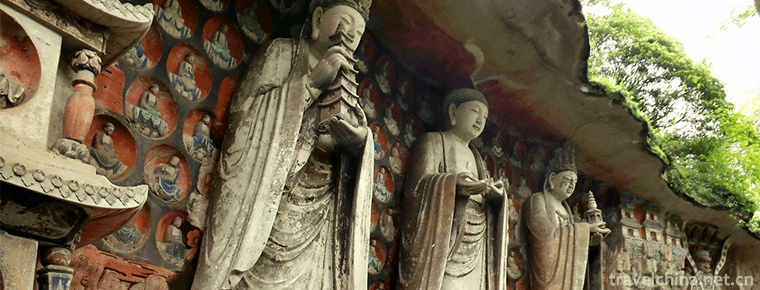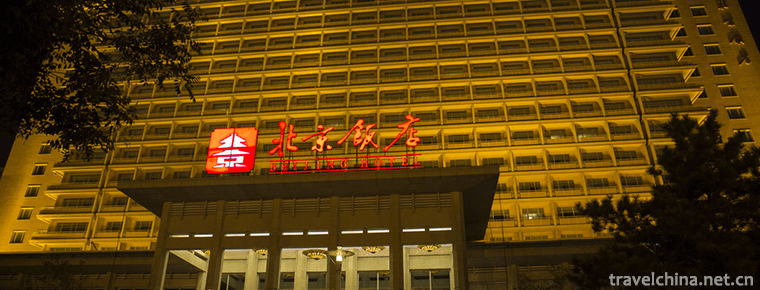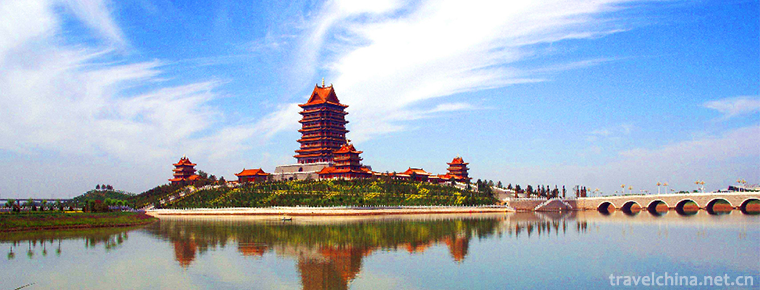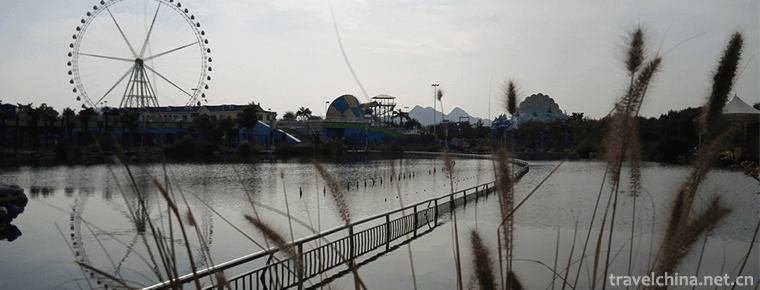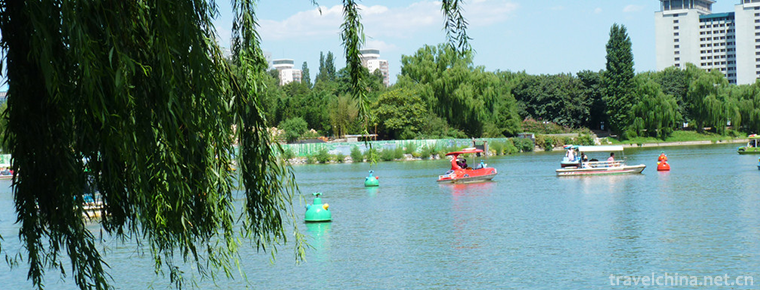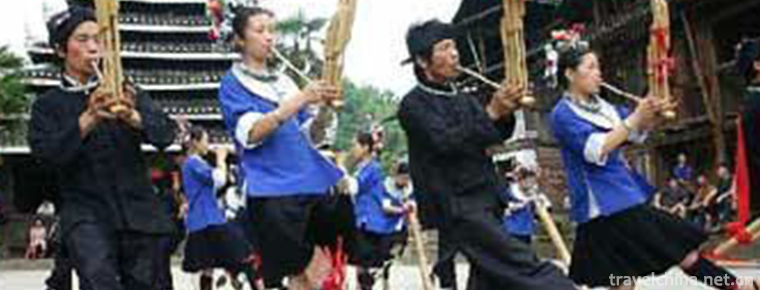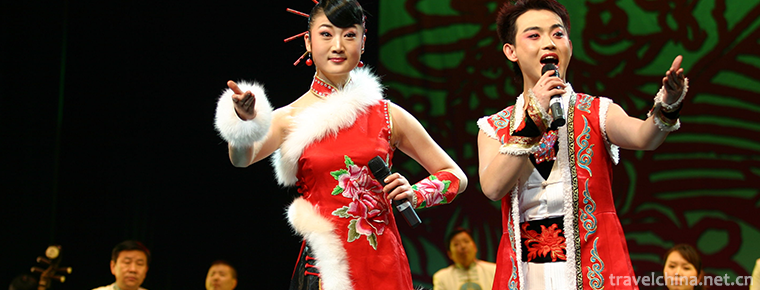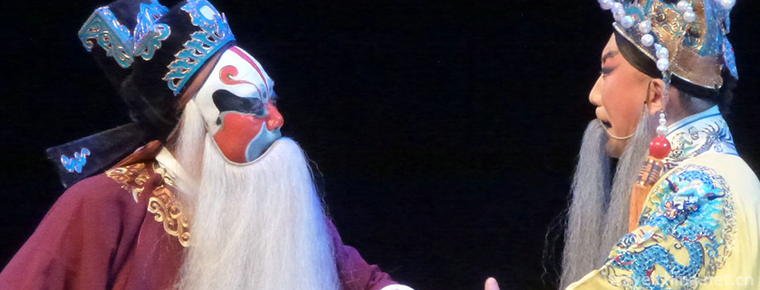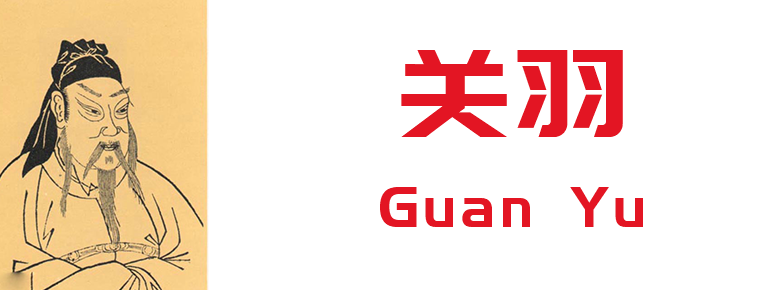Miao folk songs
Miao folk songs
According to its content, Miao folk songs can be divided into Youfang song (love song), wine song, bitter song, anti-song, funeral song, labor song, political song, children's song, riddle song and so on, with different tunes. Flying song is a special folk song singing form popular in southeastern Guizhou. It is usually sung in the mountains. Its melody is high, bold and unrestrained, and its aftertone shocks the mountain beams. It has very characteristics. Its content includes love songs, current political songs and so on. Its singing form includes solo, duet and chorus. Various forms of folk songs include traditional lyrics and impromptu choreography. Gabaifu song is a kind of rap literature popular in southeastern Guizhou. It is based on folk poetry and legendary stories. The singer sometimes narrates and sings. The content of Gabaifu song mostly reflects real people and facts in civil disputes and social phenomena.
On June 7, 2008, Jishou City of Hunan Province declared that Miao folk songs were listed in the second batch of national intangible cultural heritage list with the approval of the State Council.
historical origin
Ethnic distribution
Miao people mainly live in Damiao Mountain, Hainan Island and the border areas of Guizhou, Hunan, Hubei, Sichuan, Yunnan and Guangxi provinces and regions in southeastern Guizhou Province. In ancient Chinese classics, there are long records of the ancestors of the Miao nationality more than 5,000 years ago. This is the "Nanman" clan from the Yellow River Basin to the south of the middle reaches of the Yangtze River.
national language
Ethnic and tribal groups. Miao people have their own language. Miao language is divided into three major dialects: western Hunan, Eastern Guizhou and Sichuan, Guizhou and Yunnan. After 1956, a Latin alphabet text scheme was designed. Because of the long-term contacts between Miao and Han, a large part of Miao people both speak Chinese and use Chinese.
Song development
Pange, for example, is an ancient way for Miao young men and women to express their wishes and talents to each other. The Pange of Miao people in Zhaotong area is very interesting. The young man took a fancy to a young woman and took two peers of the same age to the girl's home together to find her elders to explain their intentions. If the girl's parents answered, "No one else, the same class." Allow Pan Song. Pan Ge's concert is arranged by the old woman. The partners of men and women who participate in the song should be both advisors and targets for themselves.
In disc songs, men usually sing first. Both sides show their talents by singing. If the man loses, the woman throws the man away with water. Sprinkling water in Miao's house is not malicious, but a kind of baptism. If the Israeli side responds to each other like a stream, singing agreeably, you can also sing to engagement. But if a woman loses her tray, she can continue her tray, which lasts until her engagement. On the day of engagement, the parents of the woman should prepare wedding wine for the man in time. They should honor the villagers who attended the concert one by one. Finally, they should drink a pair of horns of cattle and sheep to the young couple who are going to be married. Then he blew Lusheng and danced all night to congratulate the young couple.
artistic characteristics
Miao's ballads are characterized by their distinct features, neat arrangement of words and sentences, and rigorous structure. Most of them are seven-character and Four-Sentence patterns, and a few of them are separated by three-word and seven-word sentences.
The form of singing includes solo singing, accompanied by two singers, multi-person chorus and so on. They like to sing in the form of recurrent question-and-answer, or narrative, or riddle-guessing. The rhythm is slow and the tone is long and weak. Musical tunes are mostly clear, high-pitched and euphemistic. The strong nasal tone is a major feature of Miao ballads. Miao folk songs are mainly composed of short and long rhythms before and after, which can be generally divided into two categories: high-pitched and flat-pitched. High-pitched singing is mostly combined with true and false sounds in the field. The tune is high and broad, the melody fluctuates greatly, the rhythm is strong, and it can sing and dance. It is mostly used to sing folk songs such as productive labor, social life, love and so on. The flat tune has a low tune, a small melody fluctuation, and its range generally fluctuates within eight degrees. The rhythm is slow and free, the lyric is long, and there are many setbacks. The setback tone is long and weak, and the aftertone is endless. It takes quite a long time to complete a song, mostly for the singing of folk songs such as etiquette, marriage custom and sacrifice. Miao folk songs are simple and fresh, euphemistic and implicit, full of feelings and profound implications. They use a lot of metaphors and personification, and have a strong romantic color. In terms of content, Miao folk songs contain a summary of history, literature, philosophy, religion and other aspects. They are an important part of Miao folk literature and art heritage.
Representational repertoire
Miao people have always attached great importance to folk education. They not only teach their elders by example, but also educate their descendants with various kinds of ballads. Advising ballads are the ballads reflecting family ethics and moral education in Miao society. They mainly include "Family Instruction Song", "Jiaozi Song", "Confucius Yu Shige Song", "Nurturing Song" and "Advising Marriage Song".
The Miao people attach great importance to family education. The "Family Instruction Song" tells about the traditional family customs, family education and family law of the Miao people. It includes parents'instructions and regulations that restrict family members, as well as the rules that family members must abide by.
"Godfather's Song" is a song that parents advise their children to study diligently, listen to their parents'words and act in a strict manner; it is a song that a wife advises her husband to be diligent, a husband to be honest, and a husband to abstain from drinking and gambling; Lunhuang Song is a ballad that tells the story of five Miao emperors (five surnames) in Hainan, but it also has religion. It reminds the descendants of the Miao people not to forget their ancestors'kindness, keep in mind their ancestors' teachings and do more good deeds.
Inheritance value
Folk songs exist in every aspect of the Miao people's life, including holidays, peacetime life, labor, love, marriage and sacrifices. It can be said that there are no songs at any time, no inheritance and no one sings. Miao's singing art is known for its simplicity and frankness. The beauty of Miao's songs lies in its simplicity, sincerity and simplicity. It hardly needs accompaniment. It is sung by singers facing heaven and earth, facing themselves, facing labor, facing their sweethearts in their own voice. What they think is sung in their mouths without concealment. It is sung by nature and is the most vital music. It reflects the twists and turns of the Miao people. Meanwhile, Miao people are good at expressing their feelings through folk songs. Their rich and colorful contents embody Miao people's aesthetic evaluation of nature, society and life, and embody their simple aesthetic consciousness and aesthetic viewpoint. However, like many non-legacy projects, with the development of society, traditional culture is gradually weakening, and the survival of Miao folk songs is also in a difficult situation, how to better protect and develop the Miao folk songs culture, how to better
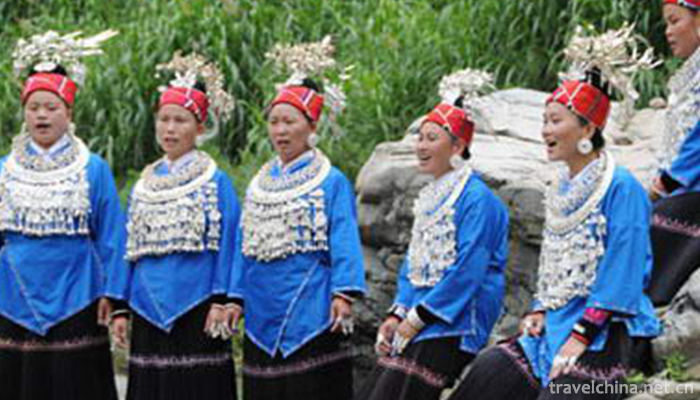

Miao folk songs
-
The Dazu Rock Carvings
Dazu Stone Scenic Area is a religious cliff sculpture in the late Tang and early Song Dynasty, with Buddhist themes as the main theme, especially the Beishan Cliff sculpture and Baoding Mountain Cliff
Views: 254 Time 2018-12-12 -
Beijing Hotel
Located in the center of Beijing, Beijing Hotel is adjacent to the former Imperial Palace and Forbidden City. It can reach Tiananmen, the Great Hall of the People
Views: 277 Time 2018-12-14 -
China Yellow River Building
The Yellow River Building of China has the Yellow River China History and Culture Exhibition Hall, the Yellow River Ningxia History and Culture Exhibition Hall, the Yellow River Impression Exhibition
Views: 184 Time 2018-12-22 -
Jinan International Park Expo
Jinan International Park Expo Park covers an area of 5176 Mu and is located in Jinan University Science Park. The Lake area is 1440 mu. It is the largest land park in China
Views: 143 Time 2019-01-21 -
Zizhuyuan Park
Zizhuyuan Park is located in the West Third Ring of Beijing, near Baishiqiao in Haidian District, west of Beijing Capital Stadium. Zizhuyuan Park was built in 1953. It was named for the Ming and Qing
Views: 281 Time 2019-03-22 -
Dong year
In Dong year, Dong language is called Ninggan, also known as Winter Festival or Yang Festival. Winter Festival was originally a festival of Yang surname of Dong nationality.
Views: 360 Time 2019-04-27 -
Song and dance duet
Errentai is commonly known as Dual Items, two classes. Originated in Shanxi and growing up in Inner Mongolia, it is a traditional opera popular in the central and Western Inner Mongolia Autonomous Reg
Views: 148 Time 2019-04-29 -
Baoding old tune
Baoding old tune, also known as old tune bangzi, is one of the traditional operas with a long history in Hebei Province and a national intangible cultural heritage. At first, it was a popular Hexi tun
Views: 371 Time 2019-05-11 -
Traditional Brewing Techniques of Distilled Liquor
Distilled liquor brewing is to first make grains, potatoes and other starch-rich or sugar-rich raw materials into grains (no filtered wine) or fermentation into grains (turbid wine), and then distille
Views: 197 Time 2019-07-25 -
Guan Yu
Guan Yu(? - 220 years), the word is long, then changed word cloud length. Hedong County Jie county (today) Shanxi Yuncheng People are called "beauty beard Gong". Early follow Liu Bei In the
Views: 150 Time 2019-09-07 -
Bengbu University
Bengbu College (Bengbu University) is a state governed country. Ministry of Education The approved one is mainly work oriented, with a coordinated development of engineering, science, management, lite
Views: 181 Time 2019-11-07 -
Neijiang geographical environment
Neijiang City is mainly hilly, surrounded by low mountains in the southeast and southwest. About 90% of the hills are between 350 and 450 meters above sea level. The geological structure is a part of the Neocathaysian subsidence zone with small fold fault scale
Views: 116 Time 2020-12-16
